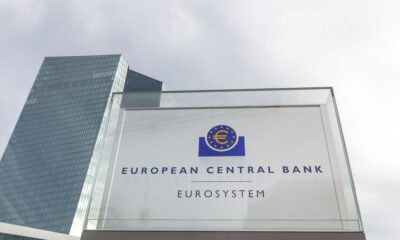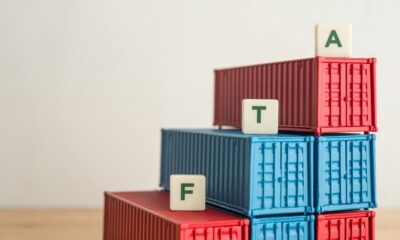Fashion
Intimiti wins Innovate P2X grant to turn textile waste into fuel

Intimiti Australia Pty Ltd, developer of Celys, the world’s first certified compostable polyester has been awarded the Innovate P2X 2025 grant by the NSW Decarbonisation Innovation Hub. This milestone accelerates Intimiti’s mission to reduce textile waste while driving innovation at the intersection of circular textiles and clean energy, transforming end-of-life clothing into Sustainable Aviation Fuel (SAF).
Intimiti Australia, developer of Celys—the world’s first certified compostable polyester—has won the Innovate P2X 2025 grant from NSW’s Decarbonisation Hub.
In partnership with Macquarie University, it will transform end-of-life clothing into Sustainable Aviation Fuel, tackling Australia’s low 2 per cent textile recycling rate and advancing circularity in textiles and clean energy.
Australia’s textile footprint highlights the urgency of intervention: 373,000 tonnes of new clothes are imported annually, while 200,000 tonnes of clothing still end up in landfill every year. Despite well-meaning donations, 210,000 tonnes of garments sent to charities or bins often cannot be resold or recycled, leaving the nation with a recycling rate of just 2 percent.
Through Innovate P2X funding and in collaboration with Macquarie University, Intimiti will help reshape the textile value chain by proving that end of life clothing can be reengineered into high value energy solutions. By bridging material innovation with clean energy, the company seeks to demonstrate a scalable model for true circularity where fashion waste is transformed into fuel for a decarbonised future. This breakthrough not only diverts valuable fibres from landfill and reduces microplastic pollution, but also delivers renewable fuel to the aviation sector, one of the hardest industries to decarbonise.
“This initiative is more than innovation, it’s reimagining waste as opportunity,” says Jason, Project Lead at Intimiti Australia. “By valorising waste streams, we’re creating high-impact circularity in textiles and energy industries.”
With Innovate P2X support, Intimiti aims to show that fashion waste can find a second life as clean energy, helping both people and the planet move toward a sustainable future.
Note: The headline, insights, and image of this press release may have been refined by the Fibre2Fashion staff; the rest of the content remains unchanged.
Fibre2Fashion News Desk (HU)
Fashion
US brand Levi Strauss appoints H&R Block CEO Jeffrey Jones to board

“Mr. Jones brings extensive experience in consumer insights, brand building and organizational transformation and has a proven record of creating significant stakeholder value,” said Bob Eckert, chair of the board of Levi Strauss & Co. “He has repeatedly strengthened brands and organizations across industries, and his leadership will play a critical role as we evolve LS&Co. into a best-in-class, DTC-first retailer.”
Levi Strauss & Co has appointed H&R Block president and CEO Jeffrey J Jones II to its board, effective January 21, 2026.
He will serve on the nominating, governance and corporate citizenship committee and the compensation and human capital committee.
Jones brings over 30 years of experience in consumer, retail and technology leadership, strengthening LS&Co’s DTC-focused strategy.
Mr. Jones has served as President, Chief Executive Officer and Director of H&R Block, Inc. since 2017 and will retire from the company on December 31, 2025. He previously served as President of Ride Sharing at Uber Technologies Inc., where he led operations, customer support, strategy and planning, product operations and marketing. Mr. Jones also served as Executive Vice President and Chief Marketing Officer at Target Corporation, overseeing brand, digital and guest experience strategy, corporate communications, investor relations and brand management of all owned brands and Target’s limited-time offering collaborations. Earlier in his career, Mr. Jones was partner and President of McKinney, an advertising agency, where he led major client engagements and organizational growth.
“Levi Strauss & Co. is an iconic company with a bold vision for the future, and I’m honored to join the board at such a pivotal moment,” said Jeffrey J. Jones II. “The company has been on a strong trajectory, deepening its connection with consumers and driving long-term, sustainable growth. I look forward to supporting the entire leadership team as they write the next chapter for this nearly 175-year-old company.”
Mr. Jones is a member of the Council for Inclusive Capitalism, the Fast Company Impact Council and the Kansas City Economic Club. He holds a Bachelor of Arts degree in Communications from the University of Dayton.
Note: The headline, insights, and image of this press release may have been refined by the Fibre2Fashion staff; the rest of the content remains unchanged.
Fibre2Fashion News Desk (RM)
Fashion
Columbia launches star-studded US Curling team uniforms for 2026

USA athletes and coaches across the Men’s, Women’s, Mixed Doubles, and Wheelchair National Teams will compete in uniforms that tell a story of our country’s heritage and stunning landscapes. The dark jersey features eight cascading stars in red, white and blue – symbolizing the curling stones used in competition. And in a powerful tribute to history, every jersey is adorned with at least 250 stars, celebrating the upcoming 250th anniversary of America’s independence.
Columbia Sportswear returns as official uniform sponsor for the US Curling National Team at the 2026 Winter Olympic Games, blending technical performance with national pride.
New competition and village wear feature heritage-inspired designs, Omni-Heat Infinity insulation, and 250 stars marking America’s upcoming 250th independence anniversary, with replica jerseys available for fans.
In addition to the competition jerseys, pants and hats, Columbia is providing athletes with village wear, including USA-branded parkas. The parkas are insulated with Columbia’s award-winning Omni-Heat Infinity, the brand’s warmest technology, reimagined in a patriotic gold star pattern to honor the historic games.
“Outfitting the United States Curling Team for the Olympic stage is an incredible honor and our teams have worked closely with USA Curling over the past several years to help propel them to the podium in Italy,” said Joe Boyle, President of Columbia Sportswear. “The uniforms are a testament to our commitment to these ambassadors – and we’re proud to support these athletes as they compete at the highest level.”
“Preparing for the Winter Games demands more than just talent; it requires gear that performs under pressure,” said Dean Gemmell, CEO of USA Curling. “Columbia’s technical expertise and athlete-first approach make them trusted partners as we head to Italy with confidence.”
Note: The headline, insights, and image of this press release may have been refined by the Fibre2Fashion staff; the rest of the content remains unchanged.
Fibre2Fashion News Desk (RM)
Fashion
China’s HSG buys controlling stake in Golden Goose

Published
December 19, 2025
Chinese Global investment firm HSG has acquired a controlling stake in Italian sneaker label Golden Goose, in one of the biggest Chinese investments in a European luxury brand.
Temasek, a global investment company, and a fund managed by its wholly-owned asset manager, True Light Capital, will acquire a minority stake. US investment fund Permira will remain committed as a strategic minority shareholder, continuing its successful partnership with Golden Goose, according to a press release from the Venice-based sneaker brand.
The deal ends months of speculation that Golden Goose was about to be sold to a Chinese investor.
Financial terms of the transaction were not disclosed. The transaction is subject to customary closing conditions and regulatory approvals and is currently expected to close within the summer of 2026. Golden Goose S.p.A. expects its €480.0 million Senior Secured Floating Rate Notes due 2031 to be redeemed in full.
Golden Goose has been the fastest growing Italian fashion label in the past half-decade, stunning observers with its exceptional performance. Since 2020, the group has delivered consistent, strong, and profitable growth, with revenues increasing from €266 million in FY 2020 to €655 million in FY 2024. During this period, the group has accelerated its direct-to-consumer (DTC) channels, launched its Forward Store concept, diversified its product assortment, and invested significantly in ‘Co-Creation’ experiences, deepening connections with its customers worldwide.

This investment comes amid a period of strong financial performance for Golden Goose. In the nine months ending September 2025, the group reported double-digit growth across regions. Revenues rose 13% year-on- year, driven by 21% growth in its DTC channel and an expanded store network, which reached 227 directly operated stores, up from 97 in 2019.
The investment is underpinned by a strong strategic and cultural fit with Golden Goose’s growth ambitions. Drawing on the new investors’ combined experience and track records investing in international luxury and consumer technology brands, such as Moncler and Ermenegildo Zegna group by Temasek, and ByteDance, Pop Mart, RedNote, and Marshall by HSG, they will support Golden Goose’s international ambitions as a leading next-generation luxury brand, while preserving and continuing to invest in Golden Goose’s Made in Italy roots.
Silvio Campara, Golden Goose’s hard charging CEO, will continue to lead the group as chief executive officer, alongside the existing leadership team. Marco Bizzarri, currently a non- executive director on the Golden Goose board, will become non-executive chairman. He brings significant industry expertise, shaped by his leadership of globally renowned luxury brands including Gucci, Bottega Veneta, and Kering, and will play an important role in accelerating Golden Goose’s next phase of global expansion.

“We are delighted to welcome HSG and Temasek as strategic partners to Golden Goose as we step up our global ambitions as a leading international luxury brand. Their investment is yet another vote of confidence in the success of our model at the intersection of luxury, lifestyle, and sportswear, beloved by a growing, global community of dreamers. With their experience of scaling international leaders across luxury and the broader business spectrum, HSG and Temasek will help us unlock the vast opportunity ahead for Golden Goose. We are grateful to Permira for being integral partners to our successful journey so far and are delighted they will remain valued partners alongside HSG and Temasek,” said Campara.
“Golden Goose stands for love, empathy, authenticity and a powerful sense of community in today’s luxury landscape,” added Jiajia Zou, Partner at HSG. “We feel deeply privileged to partner with Temasek and Permira, together with Silvio and his talented team to support the brand as it enters its next exciting chapter of growth- especially internationally- while preserving and celebrating what makes Golden Goose so uniquely Italian. We look forward to contributing our global experience, resources, and deep respect for the brand’s heritage, with the shared ambition of bringing the unique joy and spirit of Golden Goose to consumers around the world, for generations to come.”
In addition, Francesco Pascalizi and Tara Alhadeff, partners at Permira, commented: “Golden Goose has led the way in defining what it is to be a next-gen luxury brand for two decades now. They have built a unique community of GG-lovers around the world whilst also building a robust and high performing business. Against a challenging backdrop for the luxury industry in 2024 and 2025, Silvio and his talented team have continued to deliver strong performance and healthy growth, proving that Golden Goose is a brand that can stand the test of time.”
Copyright © 2025 FashionNetwork.com All rights reserved.
-

 Business6 days ago
Business6 days agoHitting The ‘High Notes’ In Ties: Nepal Set To Lift Ban On Indian Bills Above ₹100
-

 Sports5 days ago
Sports5 days agoJets defensive lineman rips NFL officials after ejection vs Jaguars
-

 Business5 days ago
Business5 days agoKSE-100 index gains 876 points amid cut in policy rate | The Express Tribune
-

 Tech6 days ago
Tech6 days agoFor the First Time, AI Analyzes Language as Well as a Human Expert
-

 Business1 week ago
Business1 week agoIPO Explained: Meaning, Process, Benefits, Risks
-

 Business5 days ago
Business5 days agoStudying Abroad Is Costly, But Not Impossible: Experts On Smarter Financial Planning
-

 Fashion1 week ago
Fashion1 week agoCAI seeks scrapping of India’s 11% cotton duty to protect industry
-

 Tech1 week ago
Tech1 week agoThe Disney-OpenAI Deal Redefines the AI Copyright War


















